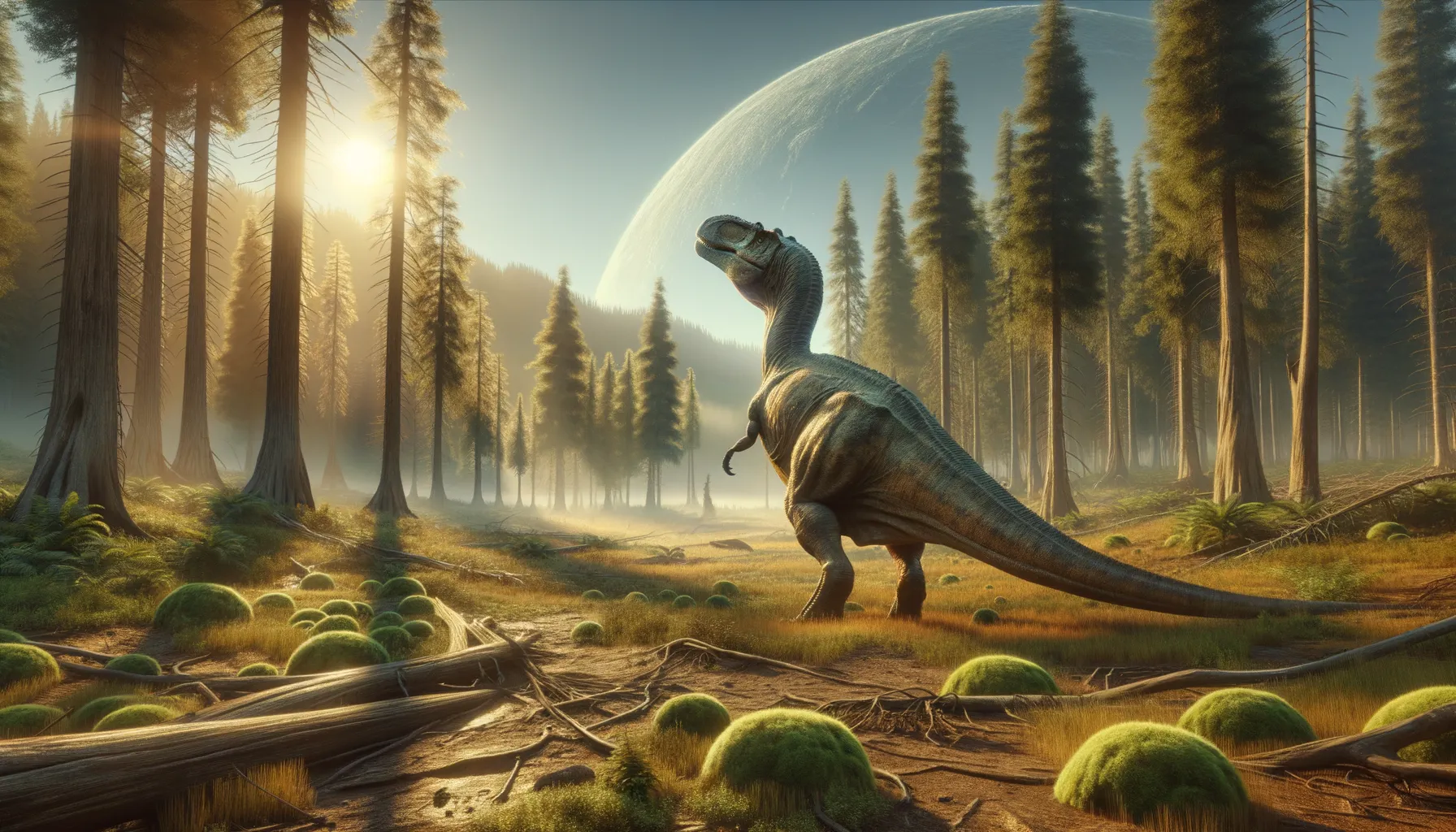
Doryphorosaurus
Speed and strength in perfect harmony!
Period
Cretaceous
Length
Roughly 10 to 12 meters from head to tail.
Height
About 4 to 5 meters at the hip.
Weight
Approximately 2,000 to 3,000 kilograms.
Doryphorosaurus was a formidable predator during the Cretaceous period, renowned for its agile movement and powerful build. It boasted sturdy limbs and a robust tail, which likely aided in its hunting prowess. Living among dense forests and wide plains, this dinosaur thrived by adapting to a variety of terrains and climates. Its unique fossil records suggest a diverse habitat range, offering valuable insight into its evolutionary success.
Diet
Doryphorosaurus was a carnivore, feasting on smaller dinosaurs and mammals. It likely used its keen senses to track down prey and the element of surprise for an efficient kill.
Hunting
This dinosaur utilized its speed and stealth to ambush prey. It likely stalked its targets before launching a quick and deadly attack, ensuring minimal escape chances for its victims.
Environmental challenges
Doryphorosaurus faced challenges such as fluctuating climates and competition for resources. Its adaptive capabilities allowed it to endure periods of scarcity by migrating or altering its hunting strategies. The ability to exploit different ecological niches may have contributed to its survival despite environmental pressures.
Speed
Moderately fast, suitable for quick sprints.
Lifespan
Estimated around 20 to 30 years.
First discovery
Uncovered in a secluded valley in 1908.
Fun Facts
- Doryphorosaurus was a medium-sized dinosaur known for its unique spear-like tail, which it used for defense.
- This dinosaur lived during the late Jurassic period, around 150 million years ago, sharing its world with giants like Brachiosaurus.
- Fossils of Doryphorosaurus were first discovered in the rich landscapes of what is now Western Europe.
- Despite its intimidating tail, Doryphorosaurus was a herbivore, feeding on plants and leaves.
- The name 'Doryphorosaurus' means 'spear-bearing lizard', inspired by its distinctive tail shape.
- Paleontologists believe that Doryphorosaurus traveled in small herds for protection against predators.
- Doryphorosaurus had a relatively small head compared to its body, relying on a long neck to reach vegetation.
Growth and Development
Doryphorosaurus likely experienced rapid growth during its juvenile stages, reaching maturity relatively quickly to compete in its ecosystem. Its development was likely influenced by factors such as food availability and environmental conditions, which shaped its survival strategies. Fossil evidence suggests a robust skeletal structure by adulthood, indicating a successful adaptation approach.
Habitat
Doryphorosaurus thrived in varied environments, from dense forests to open plains. It adapted well to changes in its surroundings, which allowed it to exploit different food sources effectively. The varied habitat also provided ample coverage for predatory activities, making its ecosystems both challenging and advantageous.
Interaction with other species
Doryphorosaurus likely competed with other carnivores, which drove evolutionary advancements in its hunting strategies. It may have formed temporary alliances or kept rival species at bay through displays of strength. Interactions with prey shaped its behavior, leading to more efficient hunting techniques over time.
Natural lifespan
It had a natural lifespan of about 20 to 30 years.
Reproduction
Doryphorosaurus likely practiced oviparity, laying eggs in secluded nests to protect them from predators. Its reproductive strategy may have included nesting in communal sites for increased survival rates. Parental care might have been minimal, focusing on the safe selection of nesting grounds.
Social behaviour
While primarily solitary, Doryphorosaurus may have formed temporary packs during hunting or mating seasons. Social interactions likely centered around resource distribution and territory defense. Displays of dominance could have been common, establishing hierarchies within temporary groups.
Fossil locations
Fossils of Doryphorosaurus have been found in several regions, offering insights into its broad distribution. Notable discoveries occurred in North America, indicating a large habitat range. These fossil sites provide valuable information about the environmental conditions and biodiversity of its era.
